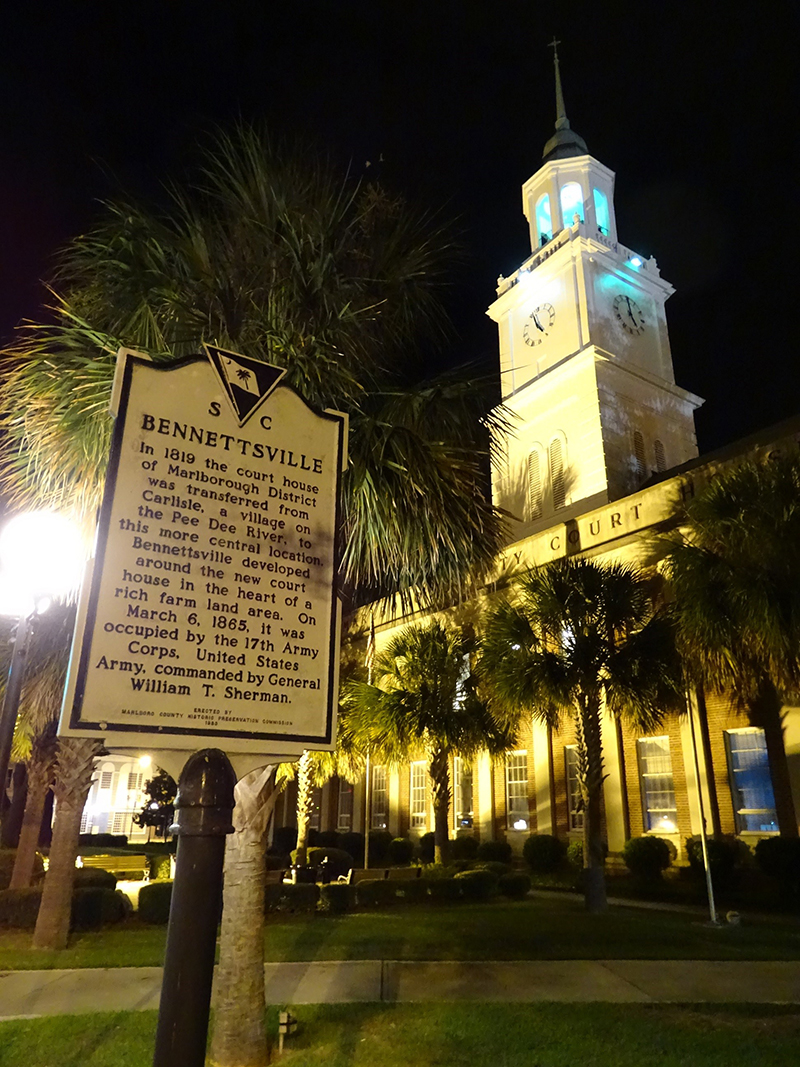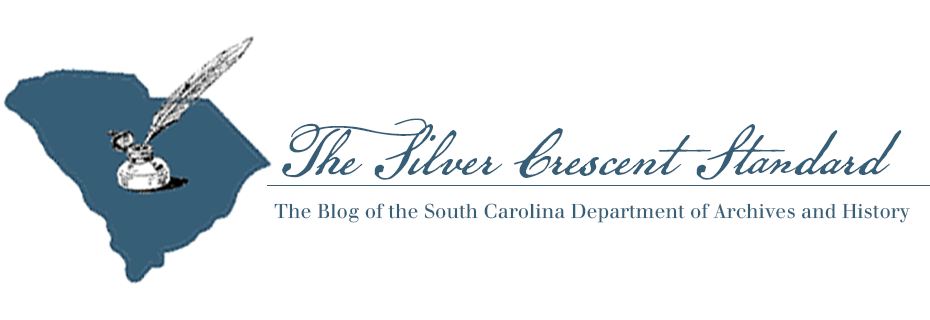
A blog post by Edwin Breeden, Ph.D.
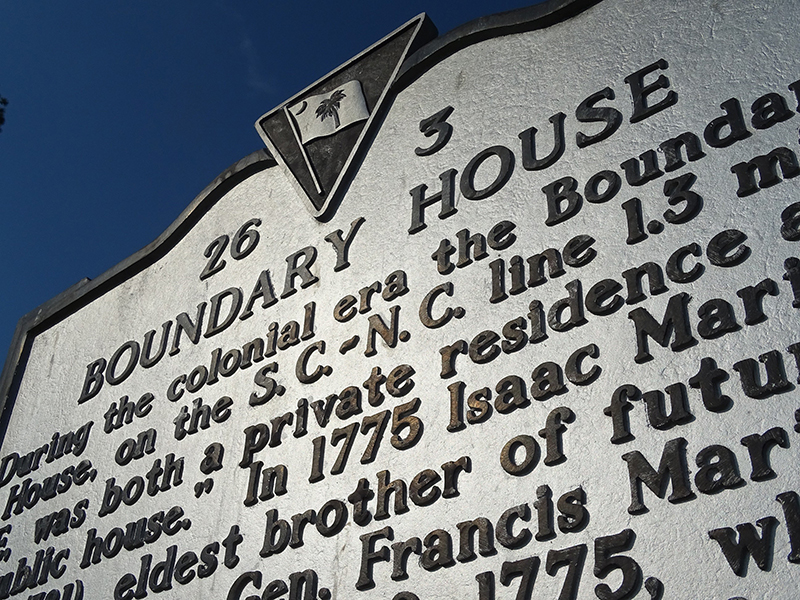
If you’ve spent much time driving South Carolina’s highways and backgrounds or walking its towns and cities, odds are you’ve passed (maybe even read!) one of those metal signs describing the history of wherever it is you find yourself. Today painted black-on-silver and crowned by an emblem of the palmetto flag, these signs are part of the South Carolina Historical Marker Program, established in 1936 and among the oldest state-managed historical marker programs in the U.S.
Despite some common misconceptions, very few of the South Carolina Historical Markers that dot the Palmetto State were put there “by the state.” Rather, nearly all those markers were proposed, funded, sponsored, and installed by local organizations. While the South Carolina Department of Archives and History (SCDAH) manages the marker program and approves all new state historical markers, those local groups are the ones who ultimately drive the program and guide what new places around the state get “marked.”
If there’s somewhere in your community with an important history you think deserves greater acknowledgement, applying for a new South Carolina Historical Marker is one way to preserve and share that place’s story.
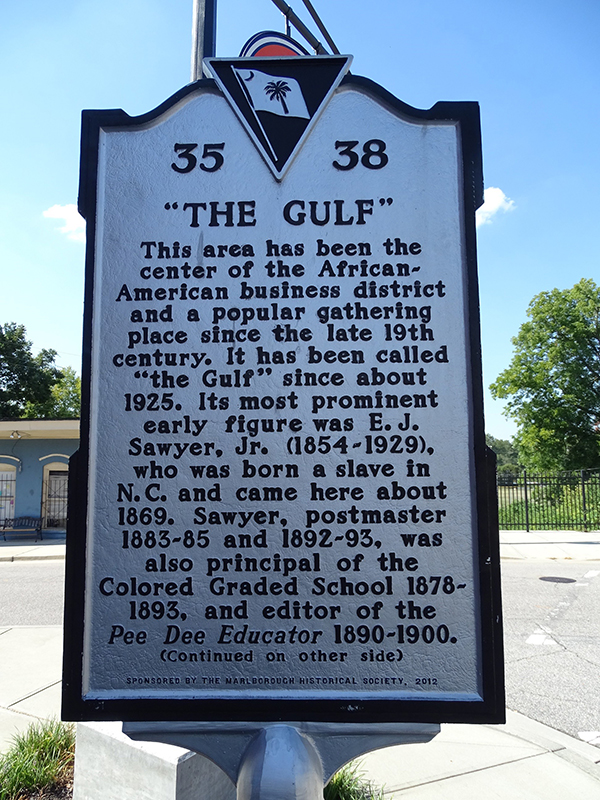
Before You Apply
Anyone considering applying for a new state historical marker should first read the program policies and criteria available on our webpage. These will provide a clear idea of whether the topic you’re interested in is eligible for a marker and, if it is, how an SCDAH-approved marker text is likely to interpret it. If you have other questions about eligibility and criteria before sending an application, you should contact the program coordinator, Edwin Breeden.
Next, prospective sponsors should be aware that the timeframe for going through our program—from the moment SCDAH receives an application to when a marker is put in the ground—varies widely. Not including more extraordinary circumstances (e.g. global pandemics), typical factors that influence a project’s completion time include:
- The volume of applications in SCDAH’s processing queue
- The amount and quality of background information, source materials, etc. provided with the application
- How quickly sponsors respond to communications from SCDAH
- Number of drafts needed to finalize a marker’s exact wording
- How soon sponsors order their marker from the manufacturer after it’s approved by SCDAH
- The marker manufacturer’s production schedule
- Gaining needed public or private approvals for marker location
SCDAH is usually able to review an application, conduct additional research, and produce a draft marker text for the sponsor’s consideration 1-2 months after we receive a proposal; longer processing times are usually the result of inadequate applications that require extra research. Under the most ideal circumstances, though, sponsors can expect to spend at least 6 months completing all the steps required to actually get a marker in the ground. Many marker projects require 9-12 months or even multiple years. However, if a sponsor plans ahead, does their research, and keeps up with the different steps below, they can get through the entire process in a much more reasonable amount of time.
Preparing the Application
he first thing to know when preparing an application is that all South Carolina Historical Markers must be sponsored by organizations, not individuals, though individuals are welcome to request an organization sponsor a marker on their behalf. Once an official sponsor has been secured, applications for new markers are expected to include the following:
Completed South Carolina Historical Marker Application Form
This two-page form available for download on our webpage provides SCDAH with basic, practical information about your project. What title is being proposed for the marker, and where exactly will it be located? What size will it be? Who is the sponsor, and how can we reach them?
Narrative Summary of Marker Subject (1-2 paragraphs)
This is not a rough draft of the actual marker inscription. This is a brief history of the marker subject that will help the coordinator write a marker text for the sponsor’s review. When preparing this summary, sponsors should focus on the most basic, specific, and important aspects of the marker site’s history, particularly key dates and names. Sponsors should also remember that every piece of information included in this summary should be backed up by source materials, which must also be included with the application.
Copies of Source Materials (additional info in “Processing the Application”)
To the fullest extent possible, the text of a new state historical marker should be based on a careful reading of primary sources, supplemented as necessary with reputable secondary publications. If the coordinator is unable to confirm any vital information in the summary using either the materials enclosed with the application or those resources held at SCDAH, sponsors will be required to provide additional documentation.
Source materials provided to SCDAH will be kept in the marker’s permanent file, along with any additional research done by the program coordinator. Ultimately, materials from every approved marker project are made available for researchers visiting SCDAH.
Application Fee ($250)
This fee helps support SCDAH’s work managing the marker program, which includes reviewing application materials, conducting additional research, drafting texts, maintaining communication with sponsors and others, and other administrative tasks. Sponsors don’t have to pay the full cost of the marker until they place their order with the manufacturer, which doesn’t occur until after SCDAH has approved the marker and finalized its inscription.
Processing the Application
Preliminary Review and Acknowledgement
When SCDAH receives an application, the coordinator does a preliminary review to ensure it contains all the required materials. Sponsors then receive an acknowledgement of the proposal’s receipt and, if necessary, a request for any missing materials. Applications may be held up as “inactive” until all the required materials are received.
Substantive Review
SCDAH typically approves around fifty marker applications annually, so new proposals almost always go into a queue, the length of which can vary from as few as one to (more commonly) as many as ten.
When SCDAH begins reviewing an application, the coordinator takes a more in-depth look at the enclosed materials and determines whether the topic is eligible for the program. Immediate rejections are relatively rare, but sponsors may need to change a marker’s location or the basic framing of the text to make it fit the program’s criteria.
If a proposed marker subject is determined eligible, then the coordinator attempts to draft a marker text using the narrative summary and source materials provided by the sponsor. Virtually always, the coordinator also has to conduct additional research before that can be done.
Research
As much as possible, SCDAH works to ensure that marker texts are based on a critical reading of primary sources, i.e. those produced firsthand at the time of the events being documented. Secondary sources provide useful context and guidance for additional research, but SCDAH prefers they not be the sole basis for information included in a marker text, particularly if they don’t cite specific primary documents.
How much additional research the coordinator conducts varies from marker to marker. For well-prepared applications, it’s usually just enough to verify that the sponsor didn’t overlook a crucial part of the marker subject’s story. Others can require much more extensive and time-consuming research. SCDAH’s research rarely requires dramatic changes to the marker text, but it does frequently turn up useful information that adds to or corrects details provided by the sponsor.
Drafting the Text
Marker inscriptions must conform to line-by-line character limits set by the manufacturer and meet SCDAH’s own interpretive and stylistic standards. For those reasons, marker sponsors are not expected to write the first draft of marker text. Instead, the program coordinator prepares an initial marker text and then sends the draft to the sponsor for comment.
Revising the Text
Ultimately, the wording of every marker is the product of a dialogue between SCDAH and the sponsor. The coordinator’s first draft almost always undergoes at least one round of revisions based off feedback from the sponsor, who is asked to identify any information that appears inaccurate and communicate any general questions or concerns. Sometimes sponsors request no changes, and sometimes the draft has to be revised numerous times over the course of weeks and even months until the sponsor and coordinator agree on its exact wording.
Finalizing the Text
Once the coordinator and the sponsor agree on the marker’s wording, the text is sent to the director of SCDAH for final approval. A marker is considered officially approved only when it has been signed by the director.
After that happens, the coordinator sends the sponsor an official notification packet with instructions for what to do next. The coordinator then adds the marker information to various SCDAH internal lists and moves the file into a “completed” section. It stays there until the next batch of completed marker files is accessioned into the archives, which happens every five years.
At this point in the process, the coordinator remains available to assist the sponsor in any way, however the sponsor is responsible for ordering the marker from the manufacturer, installing it, and, if they choose to do so, hosting an unveiling.
Ordering the Marker
Once SCDAH approves a text, sponsors can take as much time as they wish before ordering their marker. Whenever the sponsor is ready, they will need to send the following to the manufacturer, Ohio-based Sewah Studios:
One copy of the final marker inscription, signed by the sponsor and the SCDAH director
Before manufacturing the marker, Sewah requires both the sponsor and SCDAH provide double-signed copies of the inscription to ensure everyone is in agreement on the marker’s final wording. For that reason, sponsors are also required to mail a signed copy of the text back to SCDAH after they receive their notification packet.
Contact information and instructions for the marker’s delivery
Markers are shipped VIA freight in a large wooden box, so special arrangements have to be made for their delivery.
Payment for the marker, post, and shipping
This cost is set by Sewah and usually changes every couple of years. At least until May 1, 2020, this ranges from $1900 - $2200, depending on the size of the marker and if the wording is the same or different on each side.
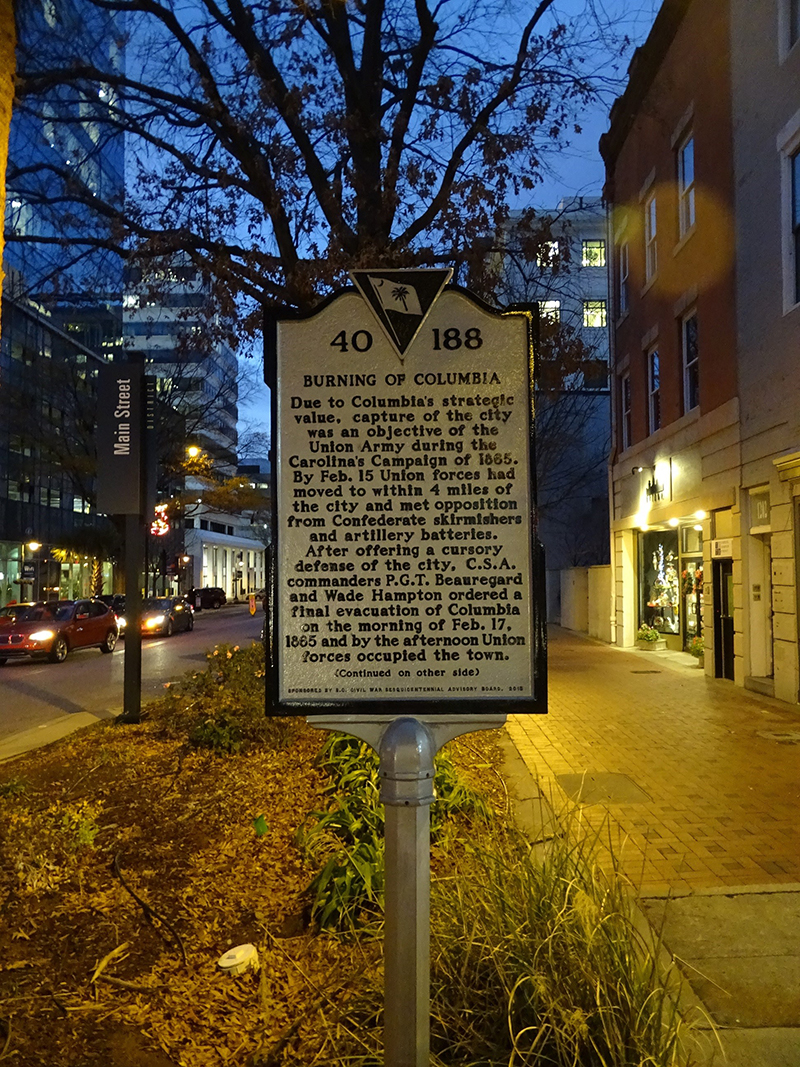
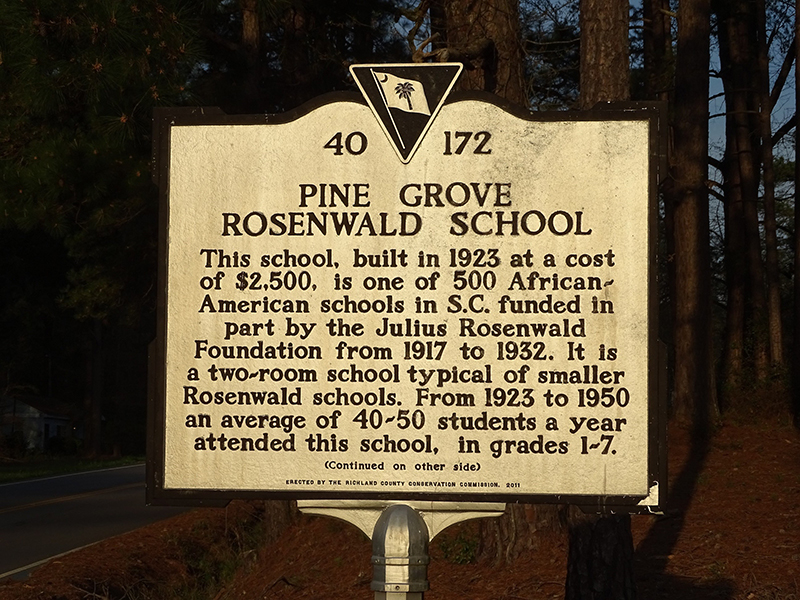
Sewah’s standard production time is twelve weeks, so sponsors should plan on it taking at least this long to receive their marker from when they place their order.
Planning the Installation
Long before submitting their order to Sewah, sponsors should begin making arrangements for the marker’s installation.
Locations and Regulations
Sponsors are responsible for determining what, if any local regulations exist governing the marker’s location. If the marker will be erected on private property, then sponsors usually just need to obtain the permission of whoever owns the property. For a marker that interprets a private property but isn’t technically located on it, SCDAH still expects sponsors to contact the owner and secure their blessing for the project.
Sponsors wishing to erect their marker in a public right-of-way must abide by the requirements and regulations of whatever public entity manages it, whether the state, county, or city. Because requirements can vary greatly from one location to the next, SCDAH strongly encourages sponsors to determine who maintains their preferred location as early in the process as possible. This information can usually be obtained from your local planning department or county office of the South Carolina Department of Transportation (SCDOT). For SCDOT-maintained roads, sponsors can also consult this map.
Installation in some rights-of-way, including SCDOT’s, will require sponsors install the marker using a special breakaway post system, which allows the marker post to break apart easily during an automobile collision. Sponsors should determine if their marker will be installed using this type of system before ordering their marker from Sewah Studios. Sewah does not sell the actual breakaway system, but they must specially fabricate the marker to ensure it will fit such a system.
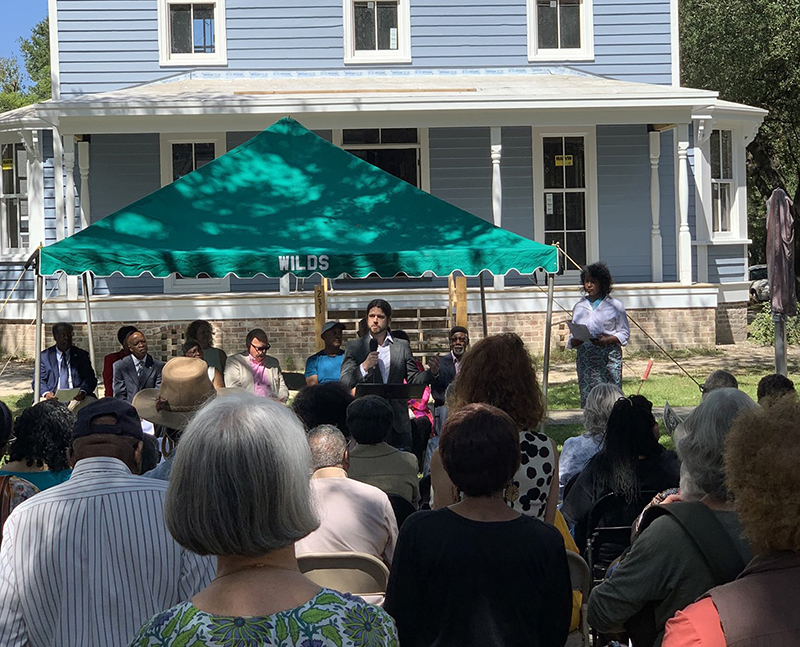
Most sponsors choose to hold a public unveiling or dedication to celebrate and publicize their project’s completion. These events range from simple affairs with a handful of attendees and one or two speakers, to elaborate ceremonies with ten or more speakers, music, and large audiences (One piece of advice for all dedications: once the marker is unveiled, visitors are either going to linger nearby looking at it, or leave. So, let the unveiling be last on your program).
How “big” sponsors go is entirely up to them, and some choose to forego a public event altogether. For those who do host a public dedication, SCDAH is usually willing to promote the event on our social media pages. When invited and available, the marker program coordinator sometimes speaks at such events and shares some background on the program’s history or the marker subject.
Maintaining the Marker
Once a marker is installed and unveiled, its sponsor is responsible for maintaining it in perpetuity. Usually, that just means keeping the marker clean and occasionally repainting it. More extreme damage from debris, automobile collisions, or vandalisms, may require markers to be shipped back to Sewah Studios for repair or fully replaced. If a marker has to be relocated (temporarily or permanently) for road construction or other reasons, sponsors are asked to notify SCDAH so we may update our records.
SCDAH doesn’t receive funds to assist with marker maintenance or repair, and we understand that local sponsors often find themselves in a similar situation. However, sponsors are encouraged to care for their marker to the best of their ability, with SCDAH always willing to provide general guidance on basic maintenance or repair.
That’s it!
If you’d like to learn more about the marker program, please contact coordinator Edwin Breeden at ebreeden@scdah.sc.gov or 803-896-6182.
